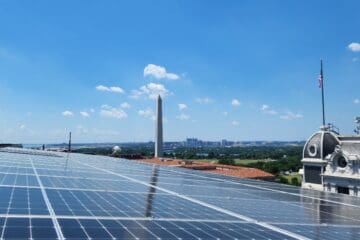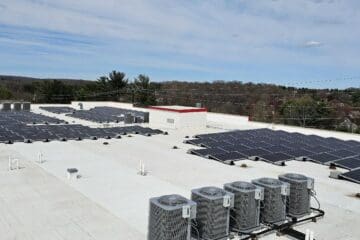Solar Growth is Accelerating, Here's How We Keep the Momentum
I talk to a lot of business owners who want to know how the solar industry stands to fair under the Biden administration. There is a sense that the current president will be rolling out some new initiatives that could dramatically improve solar economics and development in the short term. However, as of now that is not the case for most potential solar projects. The Biden team has announced $36 billion in investment to combat climate change, but the majority is earmarked for research and development as other initiatives around electric vehicles and energy infrastructure.
ITC (federal solar tax credit)
The extension of the 26% solar tax credit (ITC) at the beginning of this year through 2022 is still the biggest ticket item from the Federal Government so far. Now a new coalition of over 100 groups has issued a letter to Biden and Congress to take further action to pave the way for increased solar deployment.
The Coalition for Clean Energy Jobs is asking Biden to follow through on his previous statements in support of a 10-year extension of the 26% ITC with a direct pay option. Direct Pay would mean that instead of a tax credit the ITC could be disbursed in cash. This would have enormous implications for many non-profits and business with low tax liability who as of now cannot fully take advantage advantage of the benefits of solar installation.
Current landscape of solar installation projections
This effort is essential, because although solar deployment rose 22% in from 2019 to 2020, this rate of deployment is still far below the level needed to meet the administration’s goal of a carbon free grid by 2035. According to the Solar Energy Industry Association (SEIA) annual solar deployments will have to be double current forecasting to hit this goal.
As Biden and Congress negotiate a final infrastructure plan, they should heed the call for extending the solar tax credit, and add a direct pay provision. As any solar developer or business owner with solar will tell you, the ITC is a key part of the economic model for deployment. Extending and improving this incentive holds real promise to both clean up our grid to avoid the worst impacts of climate change and stabilize and grow the renewable workforce- which is already 400,000 strong and growing fast.
Read Also:
How we improve the solar landscape moving forward
The climate implications of a continued business-as-usual model of energy production seems to run in a cyclical motion. The climate issue will be in the news for several weeks when an event or news story (like a meeting of the United Nations Climate Change Conference at the annual Conference of Parties) hits the news cycle then seems to fade out until the next event down the road occurs. But the drumbeat towards a cleaner economy and renewable energy really needs to become louder, more amplified, and consistent. There are a multitude of organizations across the country that organize around climate change action, banning fracking, reducing fossil fuel consumption and dramatically increasing renewable energy sources everywhere. Just last week, there was a #KeepItIntheGround event at the Mall in Washington D.C. Climate was front & center and the attendees were excited to see permanent change. The way to do this involves everyone:
- Keep the climate conversation going, don’t let the topic cycle out.
- Let your elected officials know this issue is important to you, your family & your community.
- Reduce your carbon footprint. When commercial properties switch to solar they can have a sizable impact on greenhouse gas reduction.
- Stay informed. Join the mailing list of one of the many organizations advocating, marching & calling for a green transition.
The good news about solar energy deployment
Aside from the (hopefully) bold climate actions we see from this current administration, there are plenty of other initiatives happening at the state and local levels that should be continued, duplicated and increased. Maryland and Washington D.C. already have community solar programs while Virginia is finalizing their program details, and now Delaware’s governor is set to sign a community solar bill that has passed through their state legislature. As local programs like this increase, the goal is to take full advantage of the solar power deployment opportunity and move forward fast.
As Dan Whitten of SEIA (Solar Energy Industry Association) pointed out in 2016 “It took us 40 years to get to 1 million installations and it will take us only two years to get to 2 million.” The snowball effect of multiplied solar energy deployment needs to increase at an even greater volume than what we have achieved in the past. By amplifying clean energy from our current starting point we are sprinting towards an opportunity to permanently shift a foundational part of our infrastructure- how we source energy. At a cheaper cost and zero emission method, the future of energy is a win-win.






